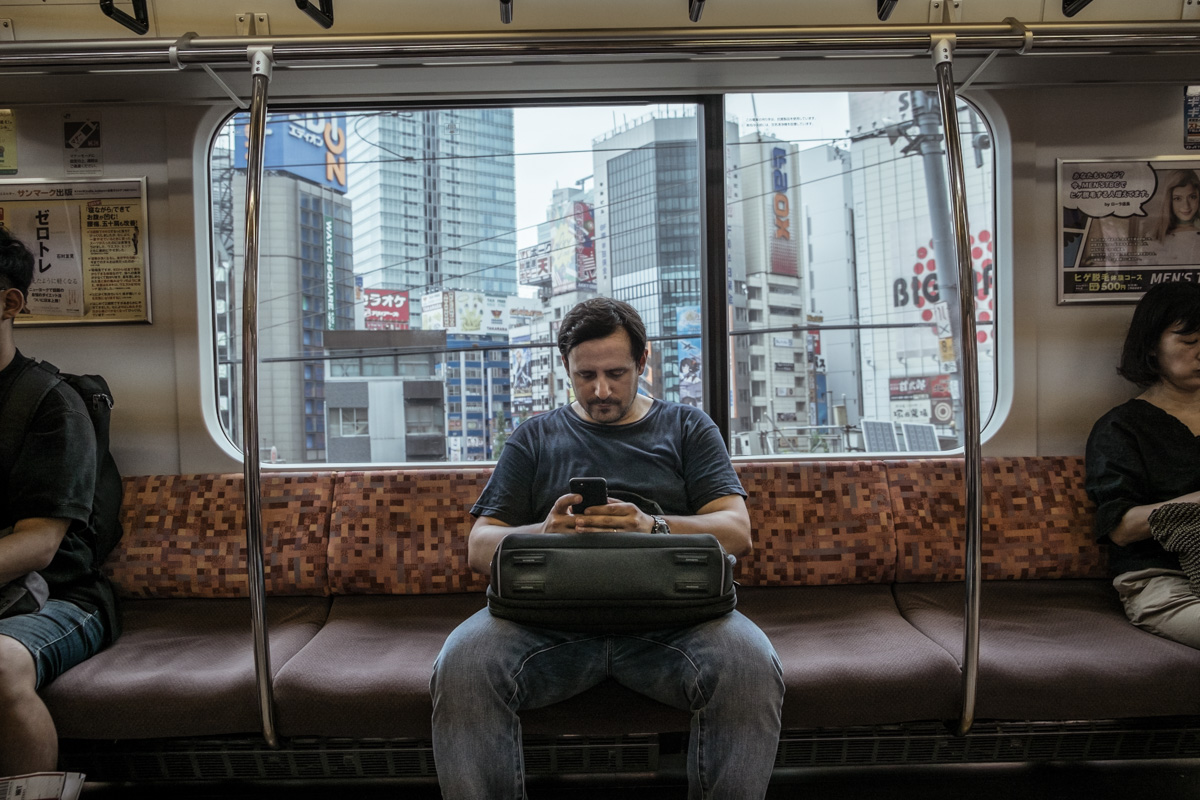
Tommaso (40, from Verona – Italy), is one of the estimated 150,000 fathers per year who, in Japan, face the tragedy of having their children abducted by their partner.
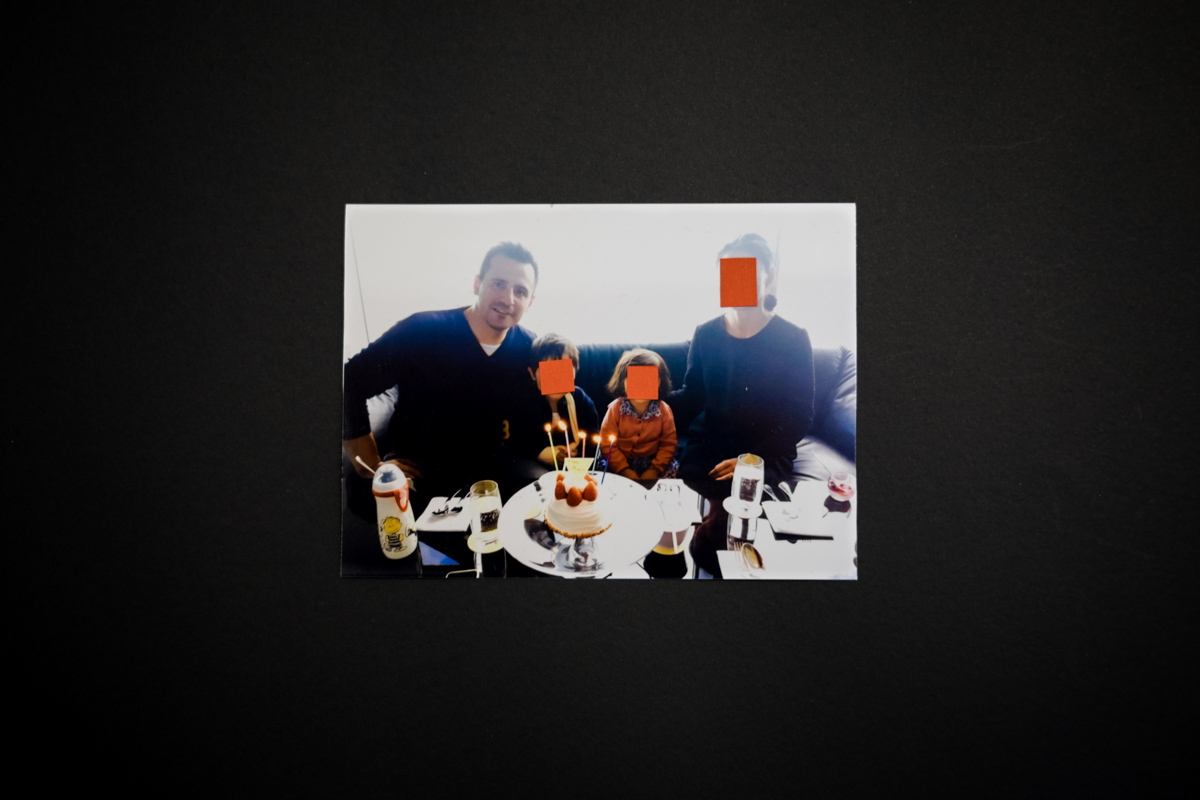
An archive family photo depicting Tommaso (40, from Verona – Italy) with his wife and two children. The archive photo was taken in December 2016 in a restaurant in Tokyo, just days before his Japanese wife left with the children and completely cut him off from their lives.
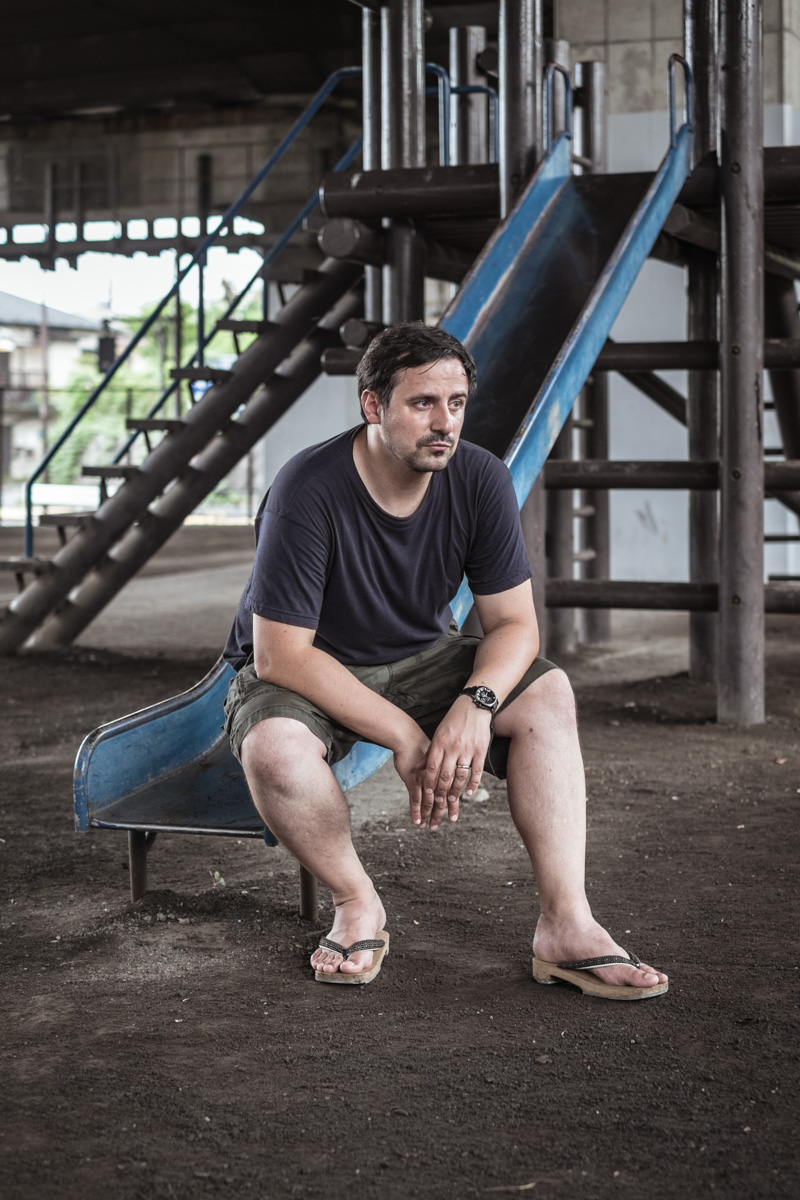
Tommaso (40, from Verona – Italy), poses for a portrait in a children's playground near his house in suburban Tokyo. In December 2016, his Japanese wife left with their two children and never came back. Since then, he has been able to see them in total for 5 hours in the first 6 months, and not a single time in the last year.
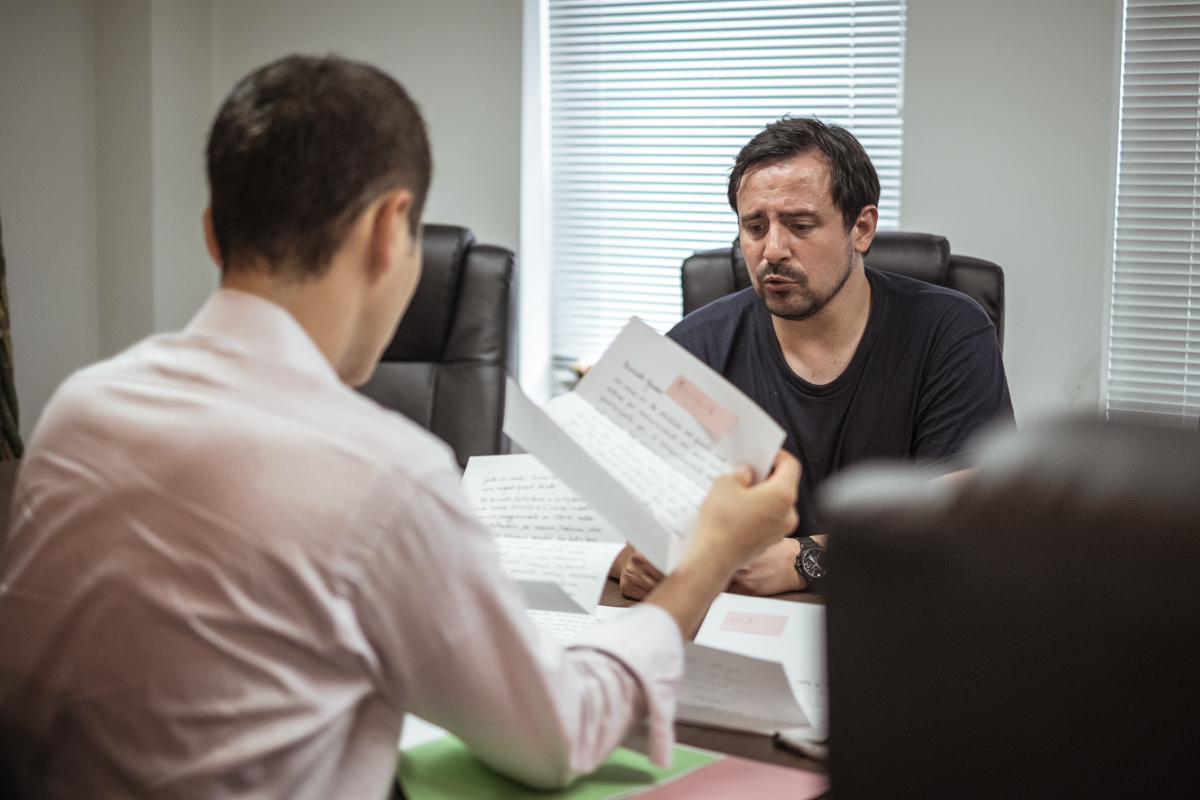
Tommaso (40, from Verona – Italy) during an appointment with his lawyer. They are discussing the next legal steps to take in the 2 civil suits he filed against his Japanese wife for abducting his children in December 2016.
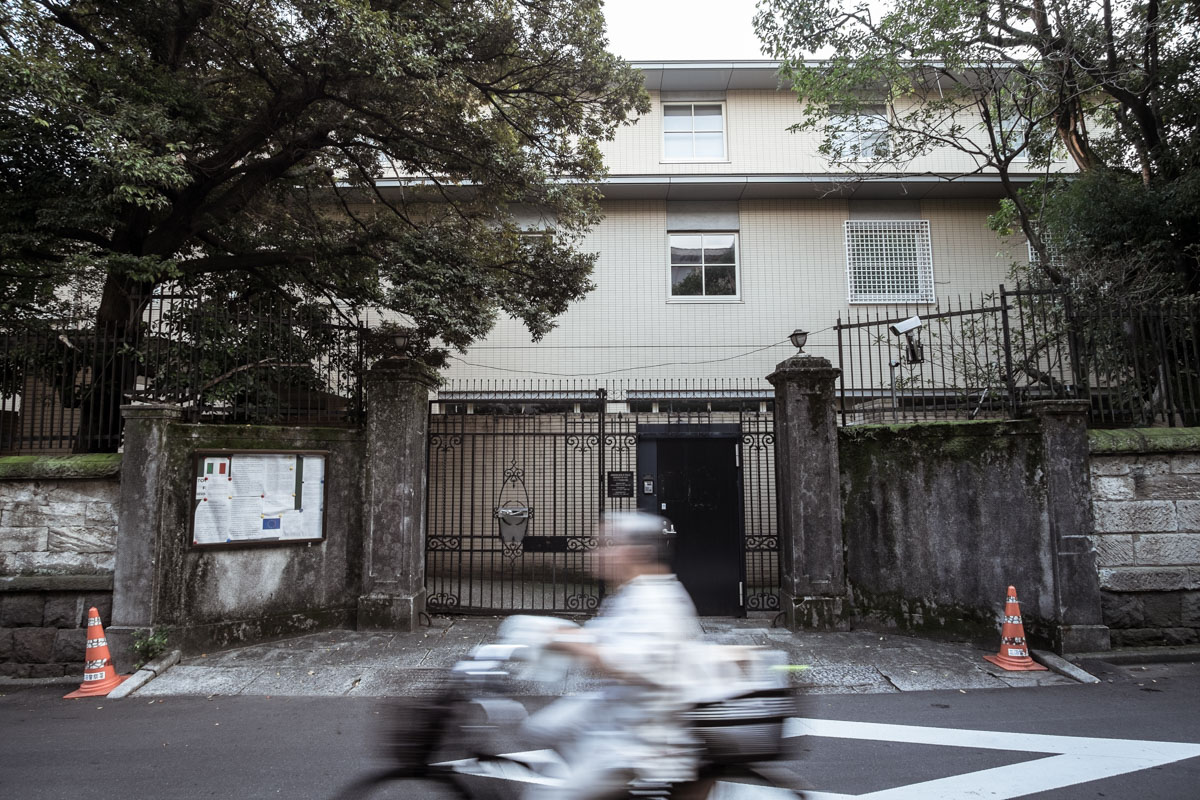
The Italian Embassy in Tokyo. In March 2018, The Italian ambassador, supported by the other EU ambassadors in Japan, issued a formal letter to the Japanese government, to put pressure and force it to tackle the issue of parental child abductions.
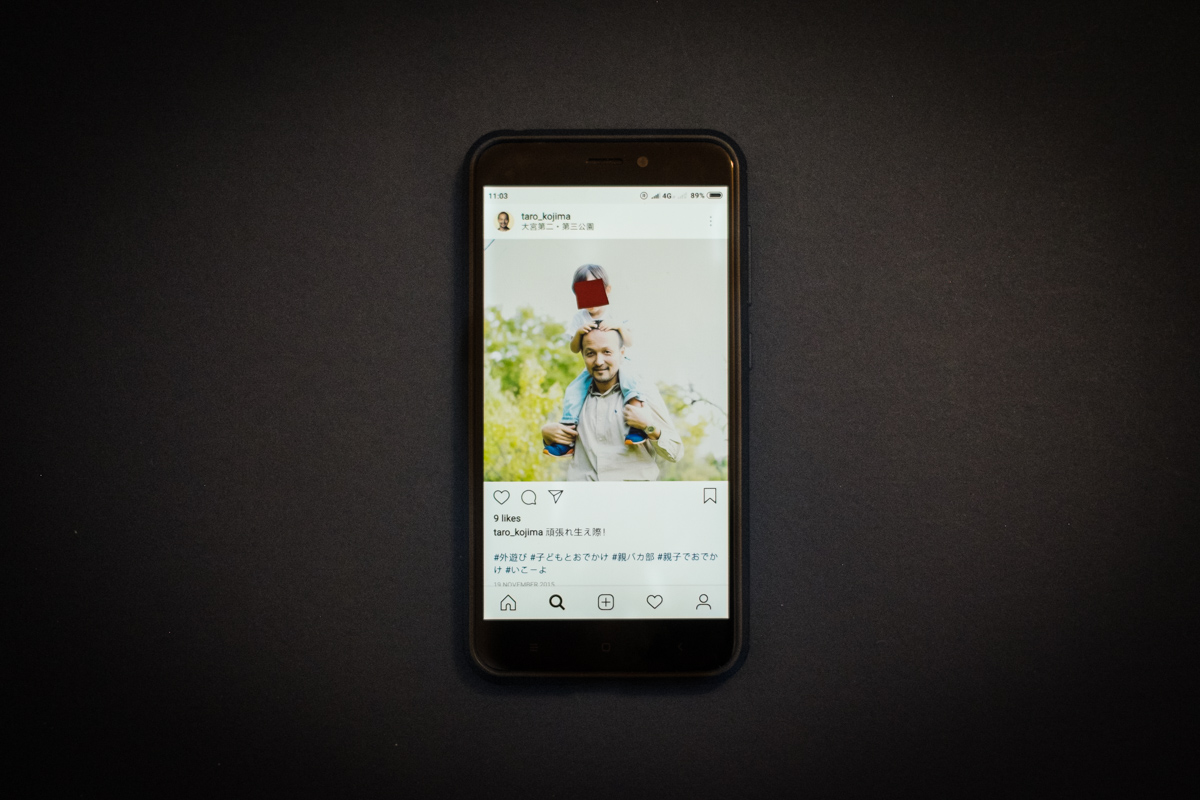
A mobile phone with an archive family photo depicting Taro (51, from Tokyo – Japan) with his child in a park in Tokyo. His wife took the photo and he posted it on his Instagram account. In 2015, his wife (also Japanese) left with their children and never came back.

Taro (51, from Tokyo – Japan) poses for a portrait in a children's playground in Tokyo. It was a spring evening of 2015 when Taro was preparing dinner at home, waiting for his (then) wife to come home with their son. They never did. Since then, he was able to see his son once, in a room with one-way mirrors.
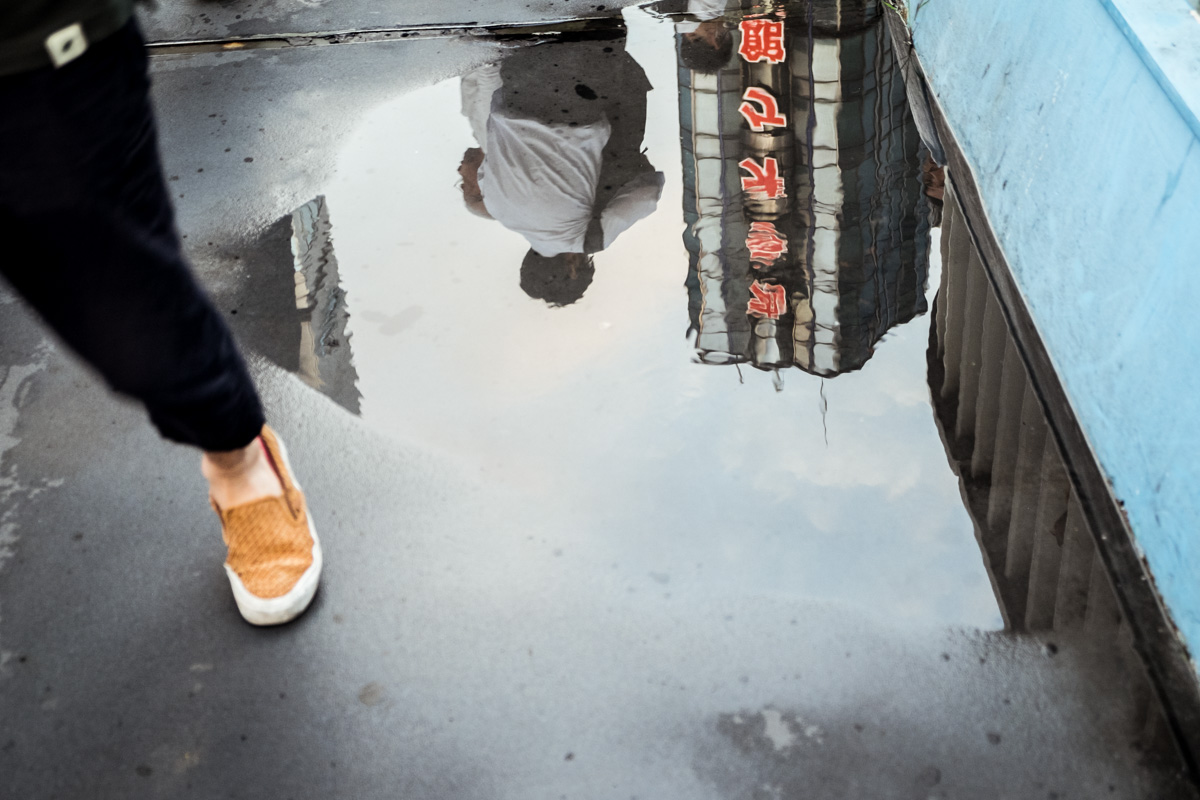
A woman and a man, reflected in a puddle, walk in opposite directions in a street of Tokyo. Japan is globally considered the “black hole” of child abduction in case of separation: every year nearly 150,000 parents are cut off from their children’s life by their partners.
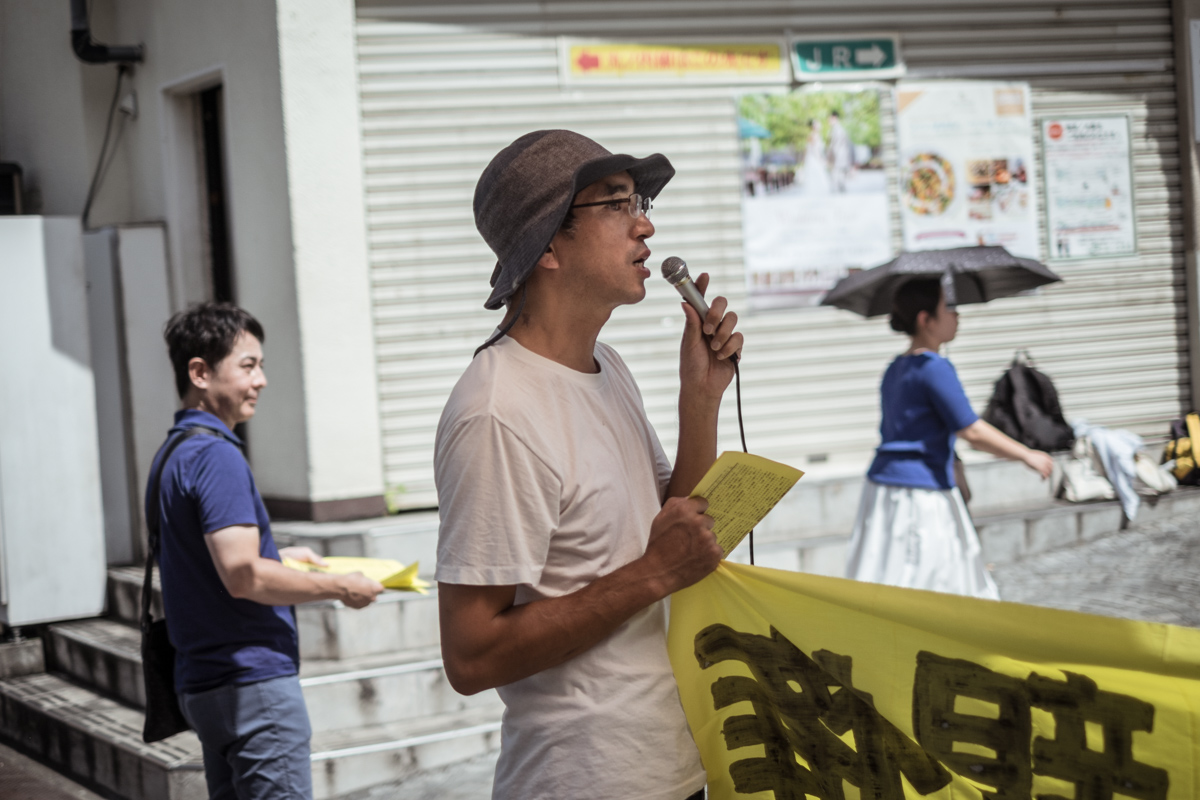
Mitsuru (43, from Inukai - Japan), on the PA speaker during a rally organized in front of a subway station in Tokyo by K-Net, an association advocating for the right to joint custody in Japan. Mitsuru founded K-Net in 2009, after his partner (also Japanese) abducted their two daughters.
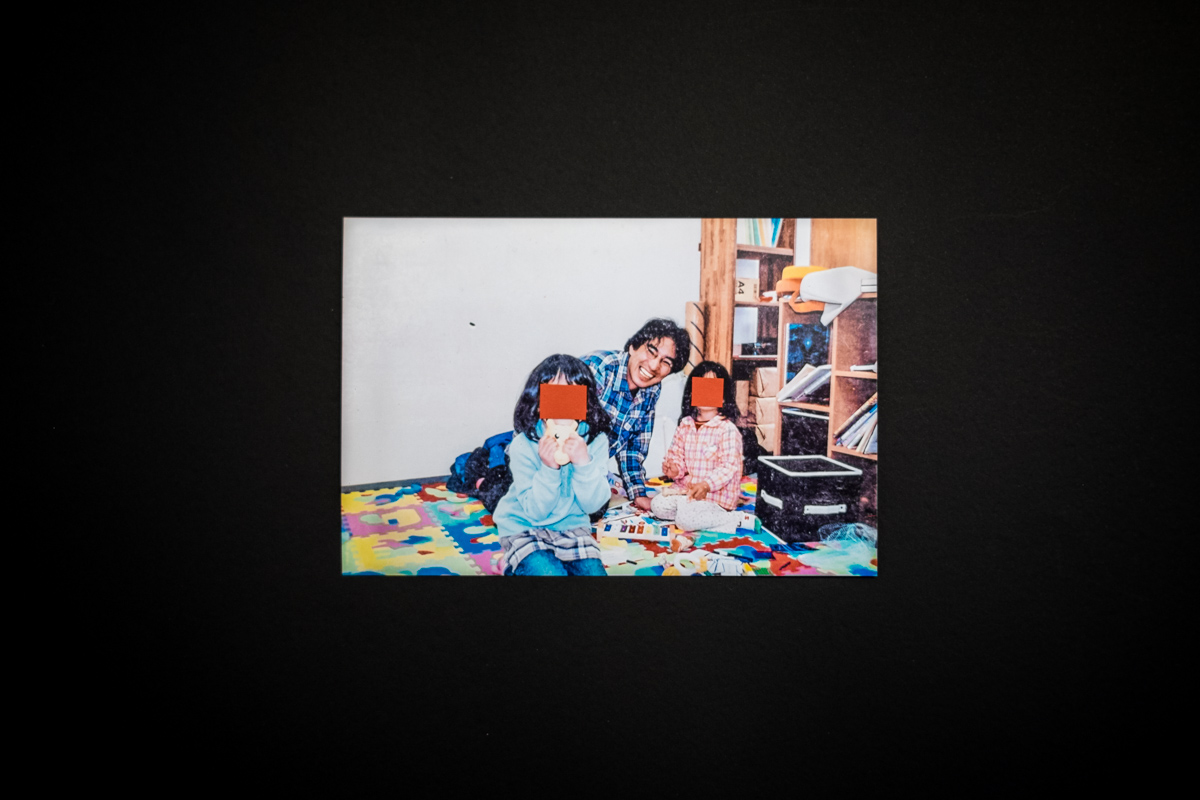
An archive family photo depicting Mitsuru (43, from Inukai - Japan) with his two daughters. The archive photo was taken in the first occasion he was able to see them again, two years and a half after his partner took them away.
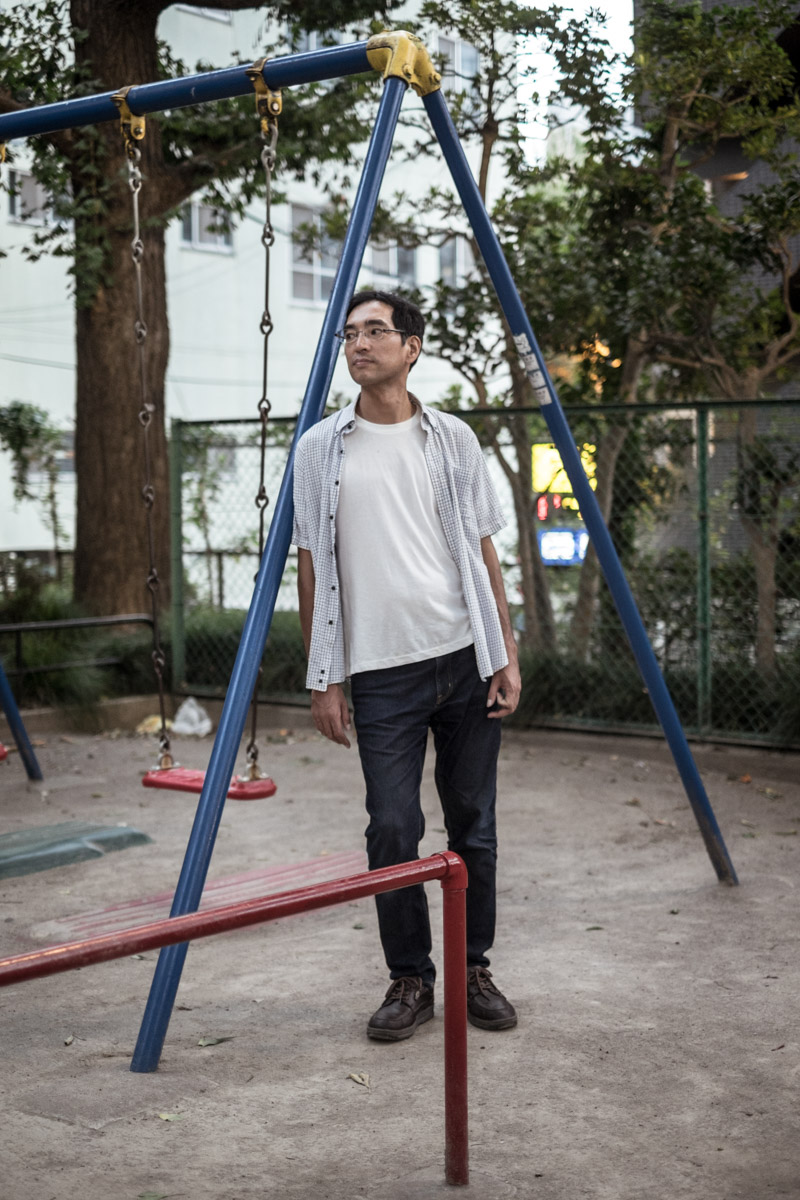
Mitsuru (43, from Inukai - Japan), poses for a portrait in a children's playground in central Tokyo. After his two daughters were taken away from him by his partner after their separation, Mitsuru decided to found K-Net, an association advocating for the right to joint custody in Japan.
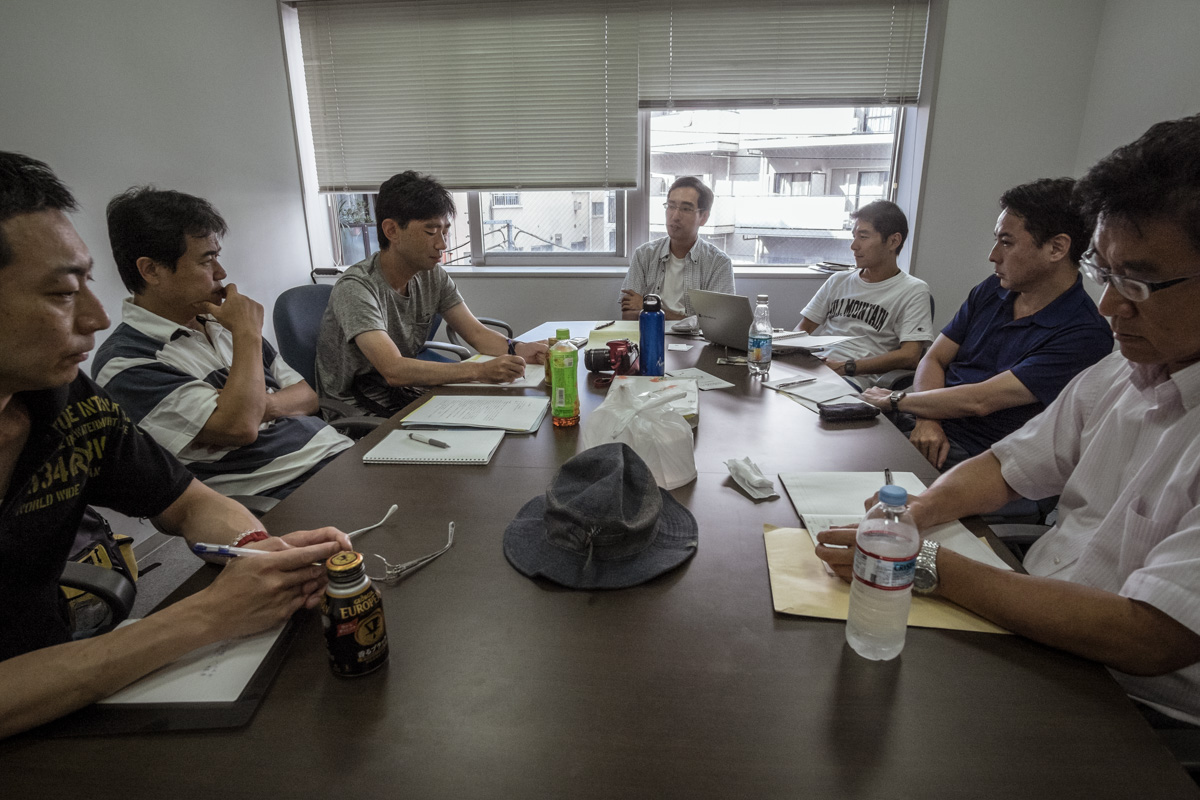
Mitsuru (43, from Inukai – Japan, at the head of the table) leads a meeting of K-Net, an association advocating for the right to joint custody in Japan. Also at the table, several fathers who had their children abducted by their partners and are looking for advice on their cases.
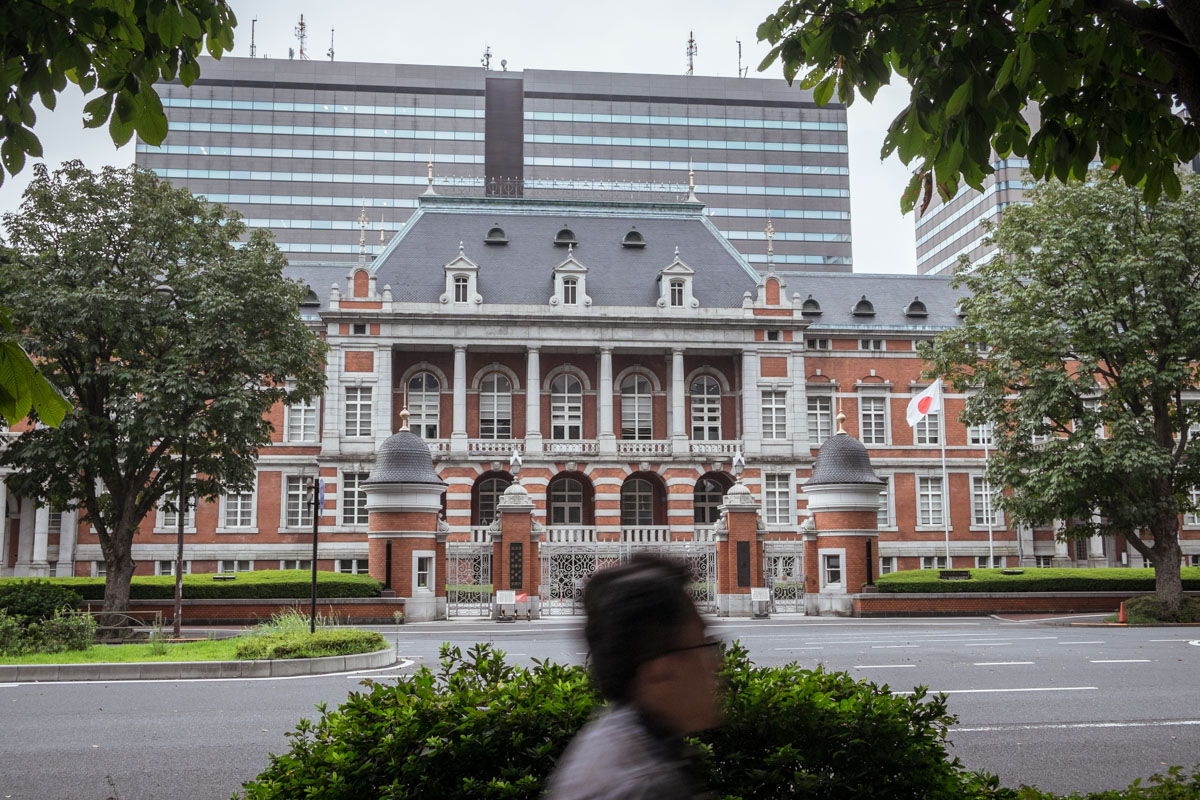
The historical building of the Ministry of Justice of Japan, and the new building in the back. The Ministry of Justice and the Japanese government were recently under international pressure to tackle the issue of child abduction in Japan.
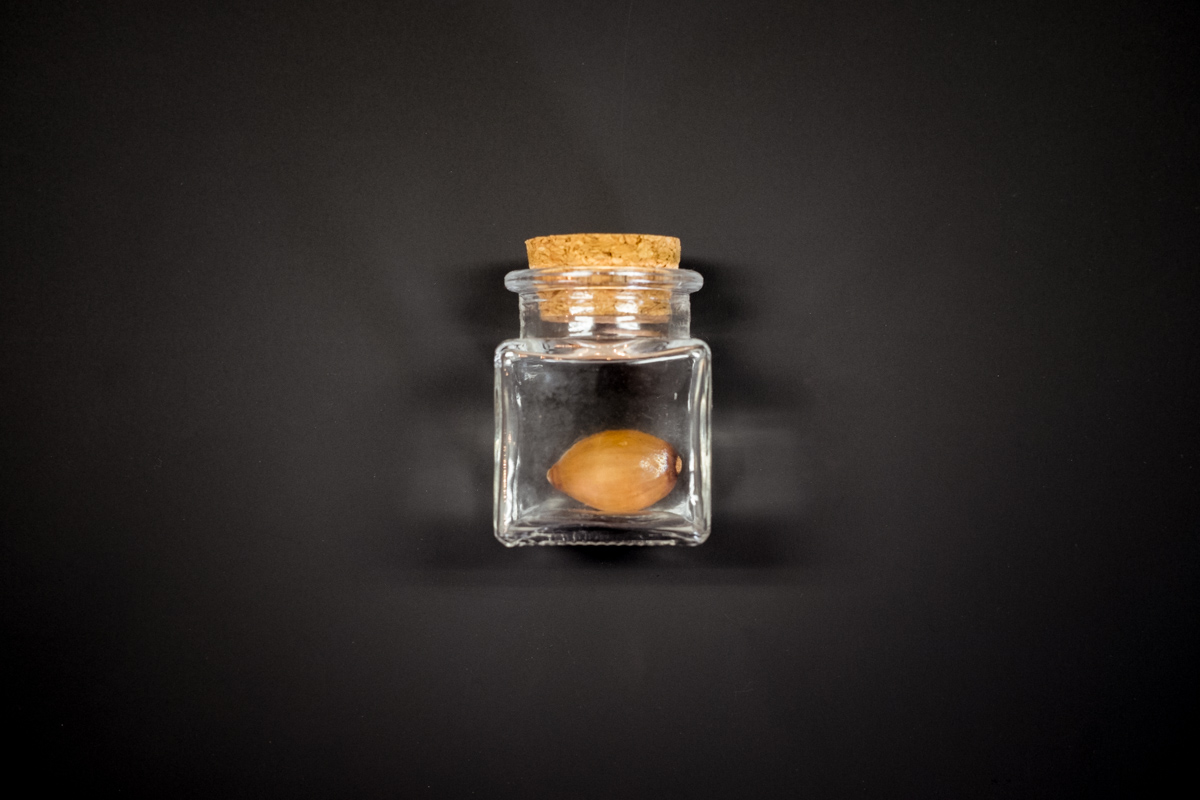
A walnut stored in a small glass bottle. The walnut belonged to Akira’s daughter. She gave it to him as a gift the first time he was able to see her, two years after she was taken away by his ex-wife. He decided to store it and keep it as a memory of that moment.
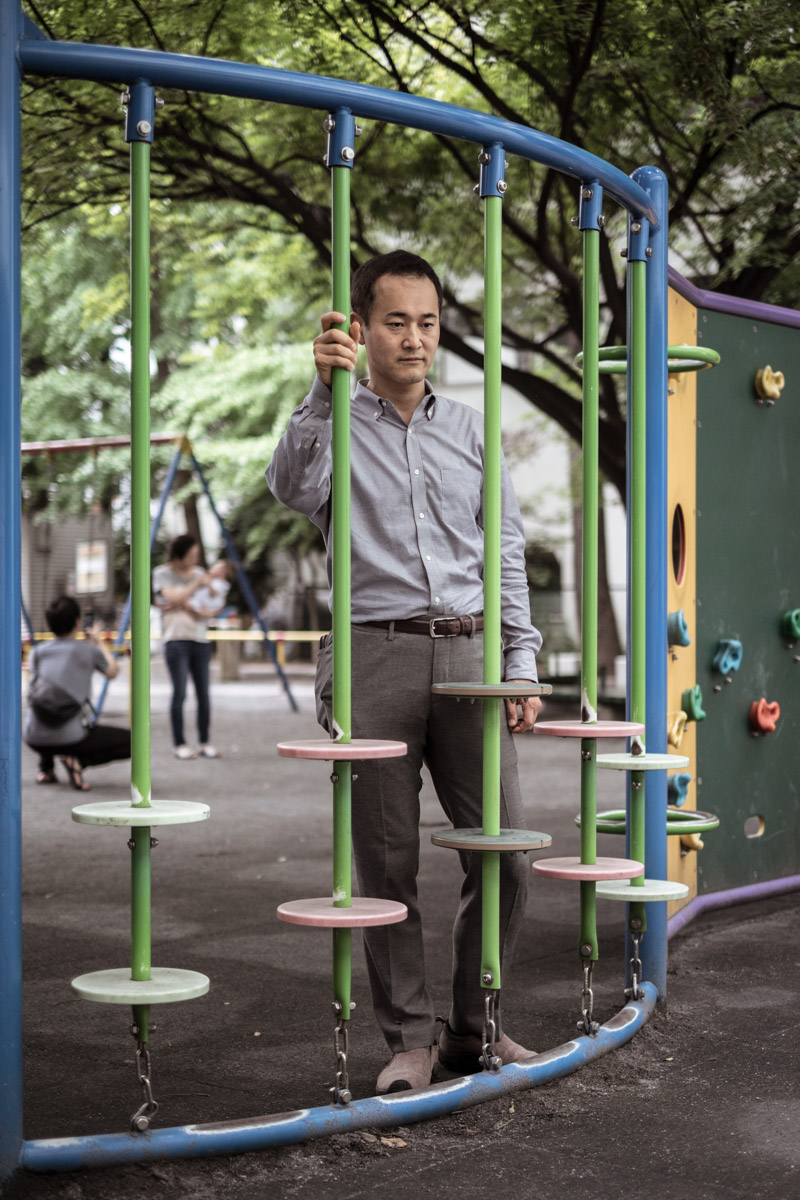
Akira poses for a portrait in a children's playground near his office in central Tokyo. Akira’s daughter was taken away from him by his ex-wife in 2012. After having been denied any contact for two years, he is currently divorced and reached an agreement with the ex-wife to see his daughter once a month for 3 hours.
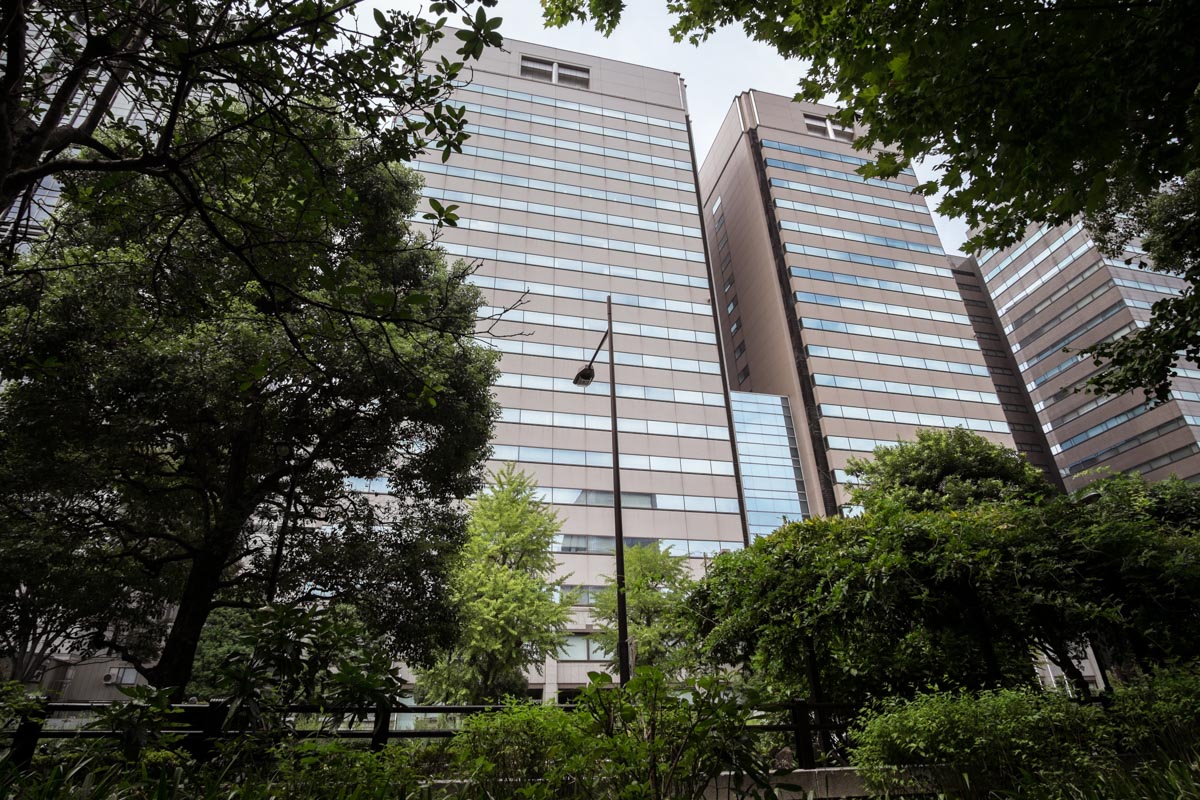
The Family Court, in Tokyo, Japan. This is the building where most of the procedings regarding child custody and family disputes take place.
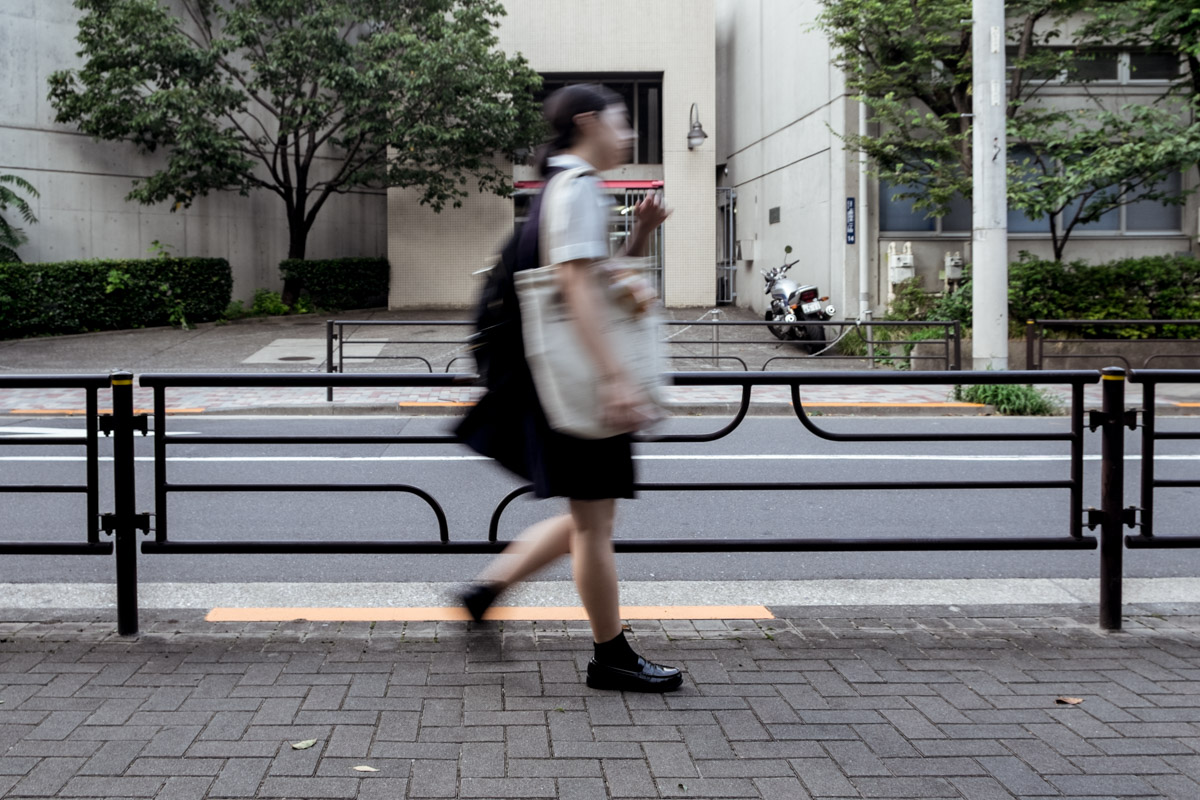
A young student in the streets of Tokyo. Japan is globally considered the “black hole” of child abduction: every year nearly 150.000 parents are pushed away from their children’s life by their partners.
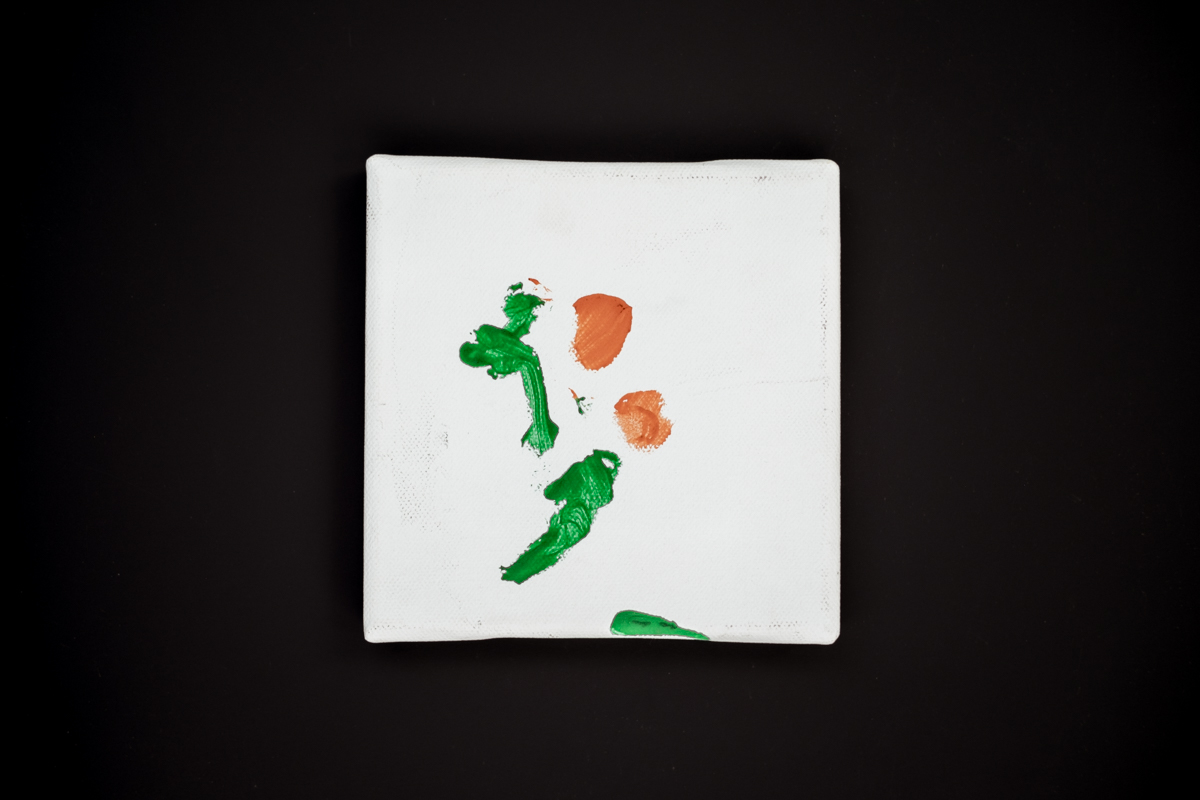
A photo of a painting made by the daughter of Klaus (fictional name). Klaus’s daughter painted it in her first months, before being abducted by his (then) wife. It is one of the few tangible memories he has got left of his daughter.
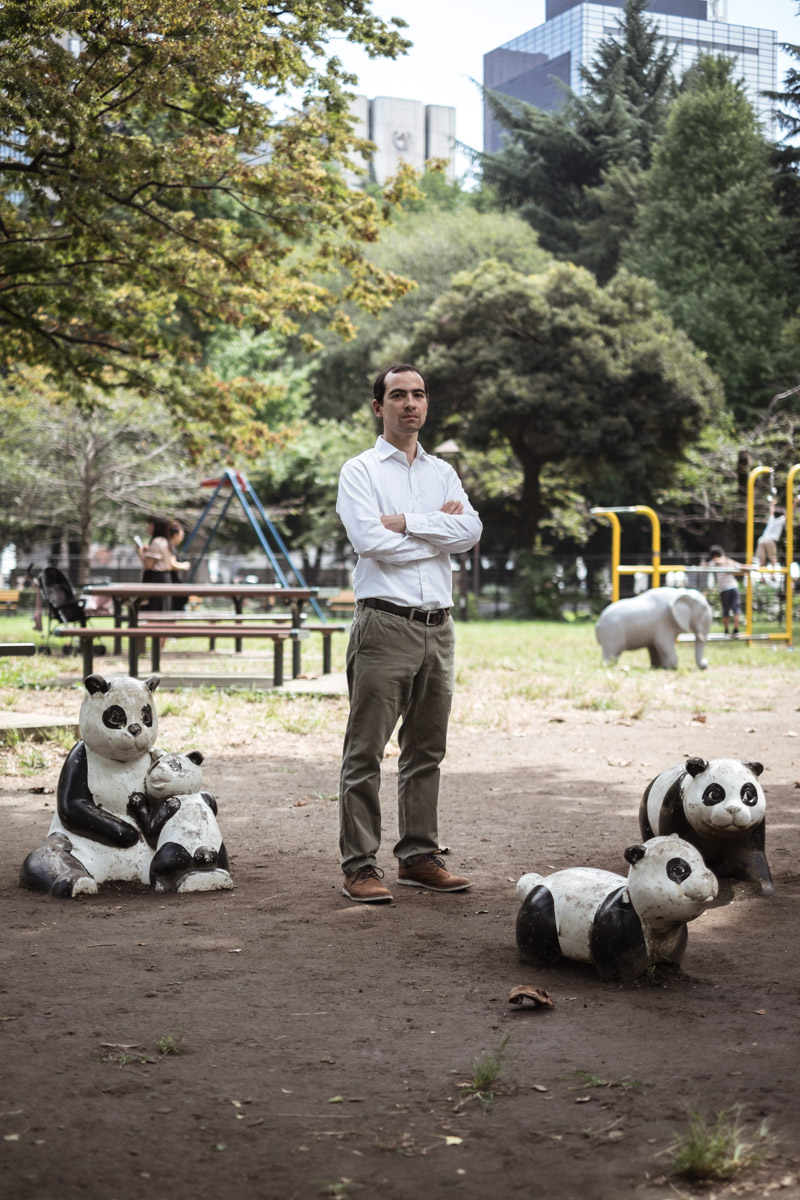
Klaus (fictional name) was living in London and was married to a Japanese woman. At the end of 2015 his (then) wife left with their daughter for a visit to her family in Japan. When she came back, she was alone. She packed her stuff and left again, for good. After long legal proceedings, in December 2016 a court sentence established his right to a regular visit schedule with the daughter, but his (now) ex-wife is not complying with it. Since then, he was only allowed sporadic Skype contacts and few short visits.
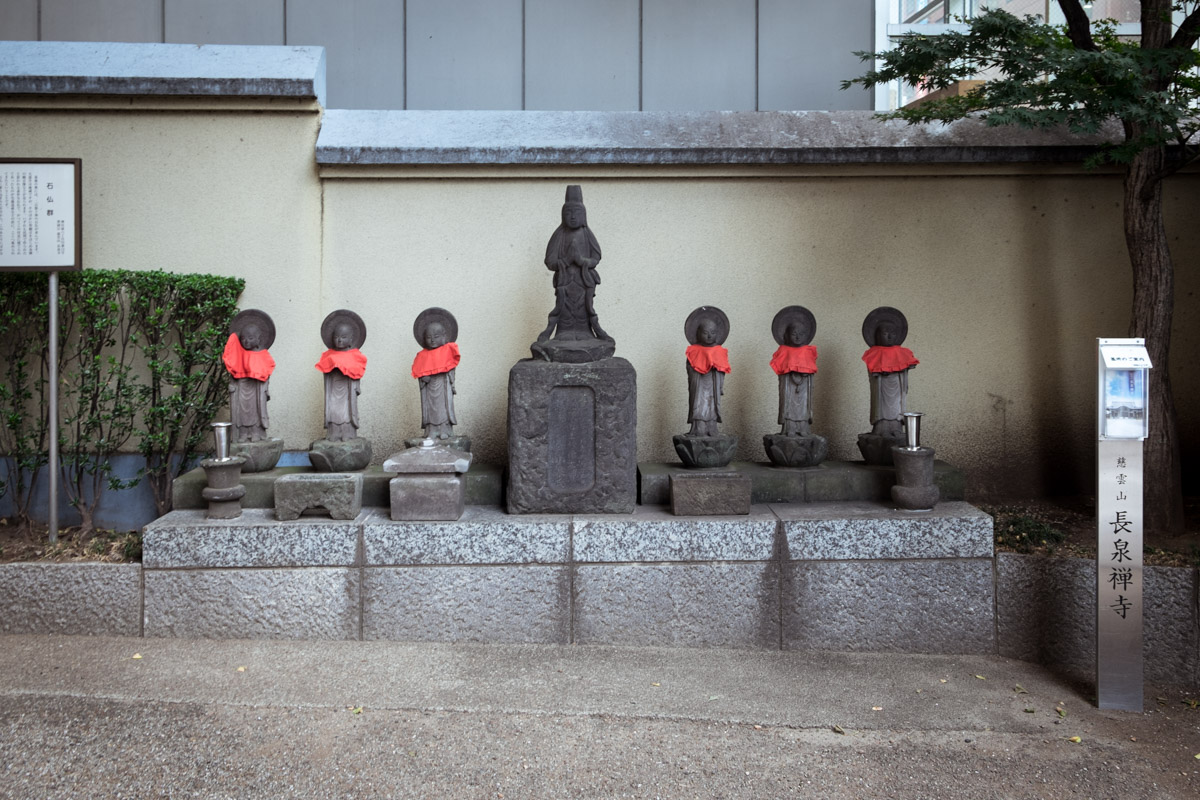
A group of statues in Tokyo, (Japan) representing Jizō, the protector of children, women and travellers.

A photo of two red children toys belonging to Pierluigi (fictional name). Pierluigi bought these toys for his two children when his family was still living together, in Germany. After moving to Japan, his wife took the children away for good. He now keeps the two toys as one of the few tangibles memories he has of his children.
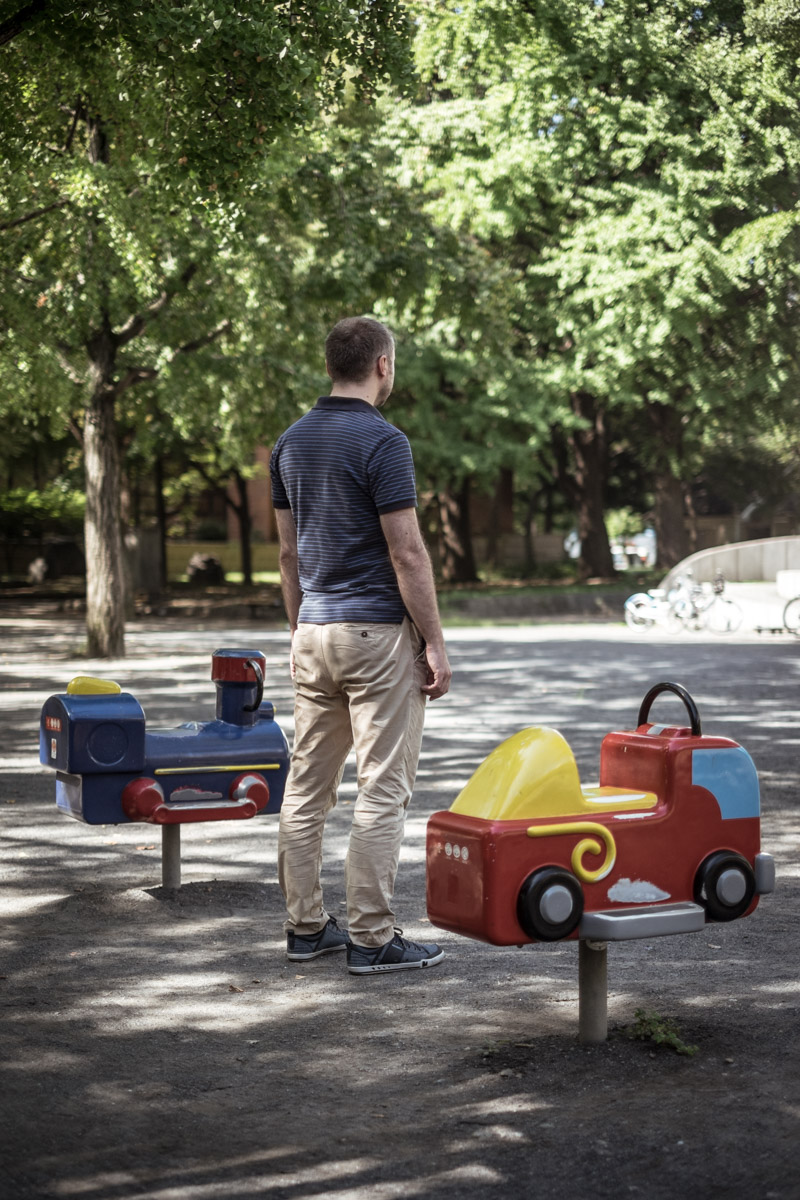
After seven years of life in Germany, Pierluigi (fictional name - he preferred to remain anonymous) moved to Tokyo with his Japanese wife and their two children (1 and 3 at the time). It was September 2015. Only two months after, his wife left with their children and never came back. The legal battle he started for his right to visit and custody has only led to partial results. In the last three years, Pierluigi has been forced away from his children for 17 months.
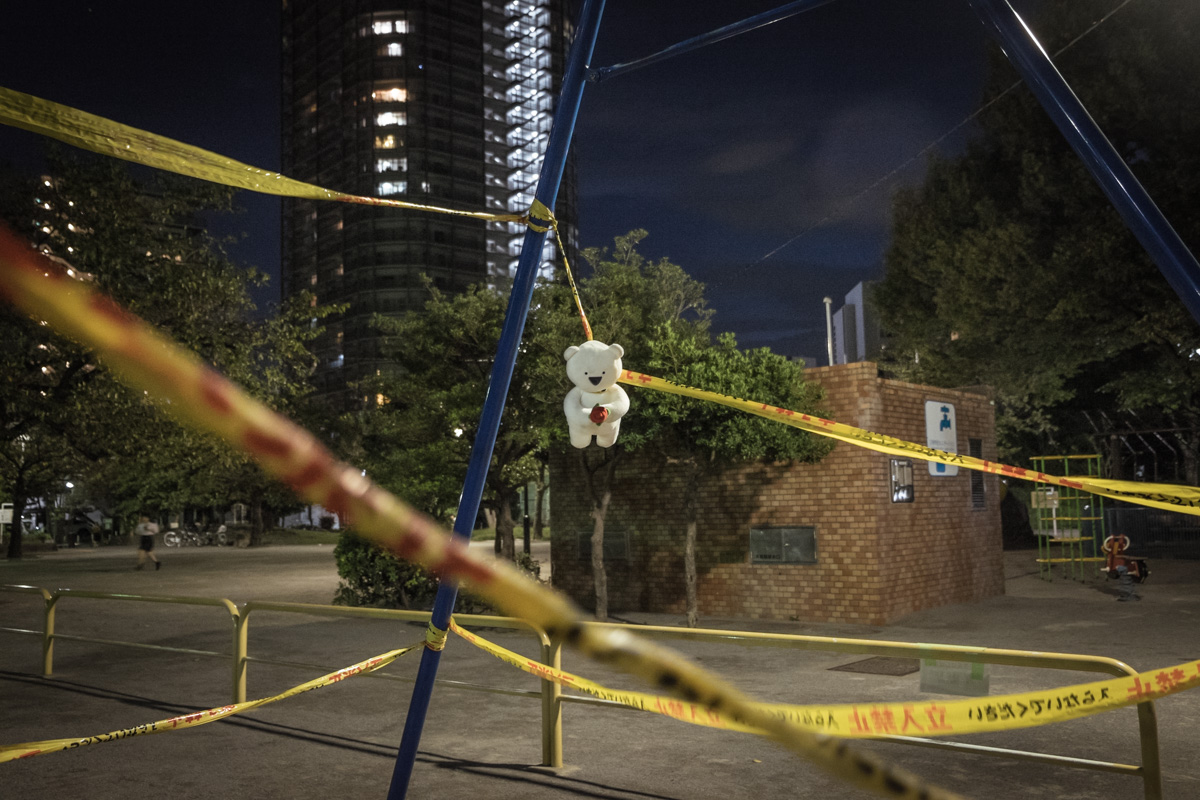
A teddy bear holding a red rose hangs by its neck from a broken swing in a children playground in central Tokyo. A group of teenagers hanged it minutes before. Japan is globally considered the “black hole” of child abduction: every year nearly 150.000 parents are pushed away from their children’s life by their partners.

In his mini apartment in the outskirts of Tokyo, Gianluca (43, from Cagliari – Italy) watch the news on TV; the day after he will travel to Hokkaido (far North Japan) to attend a scheduled visit with his son. Nobody will show up, just as nobody did in the last 5 scheduled visits.
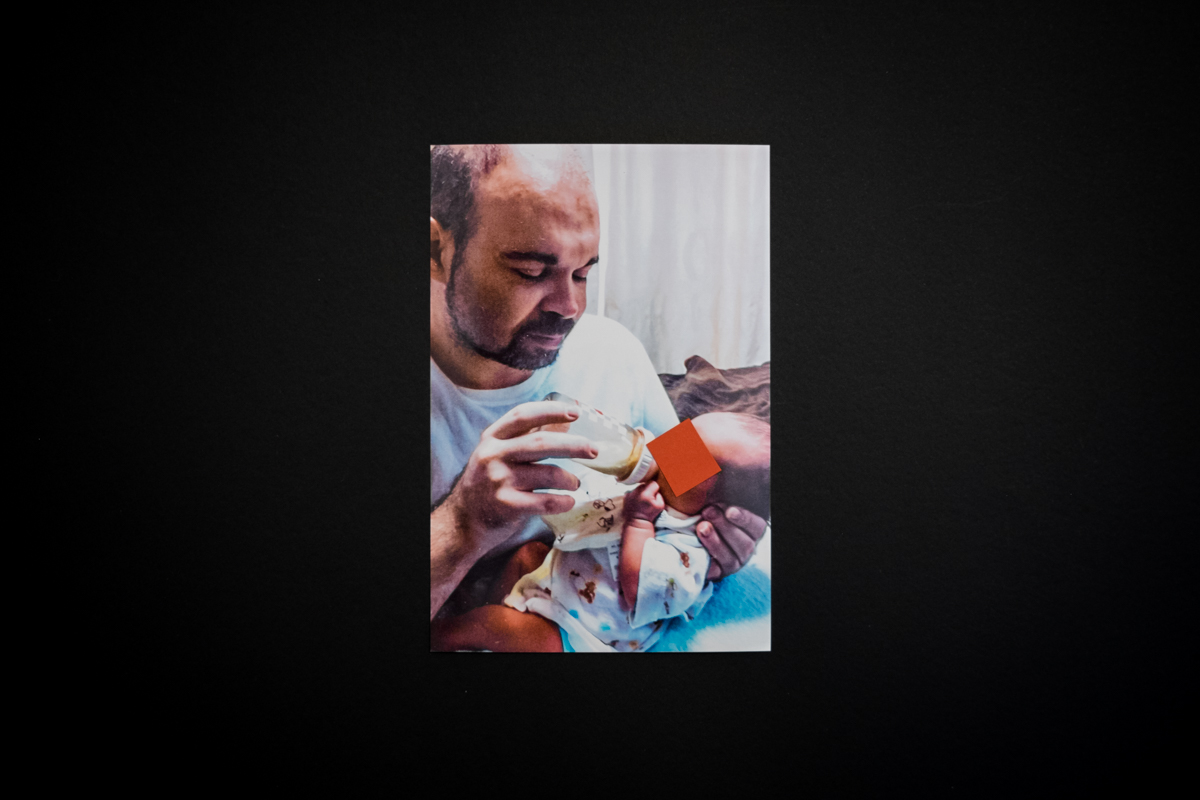
An archive family photo depicting Gianluca (43, from Cagliari – Italy) feeding his baby. The archive photo was taken just days before his Japanese wife left with the baby and completely cut him off from their lives.
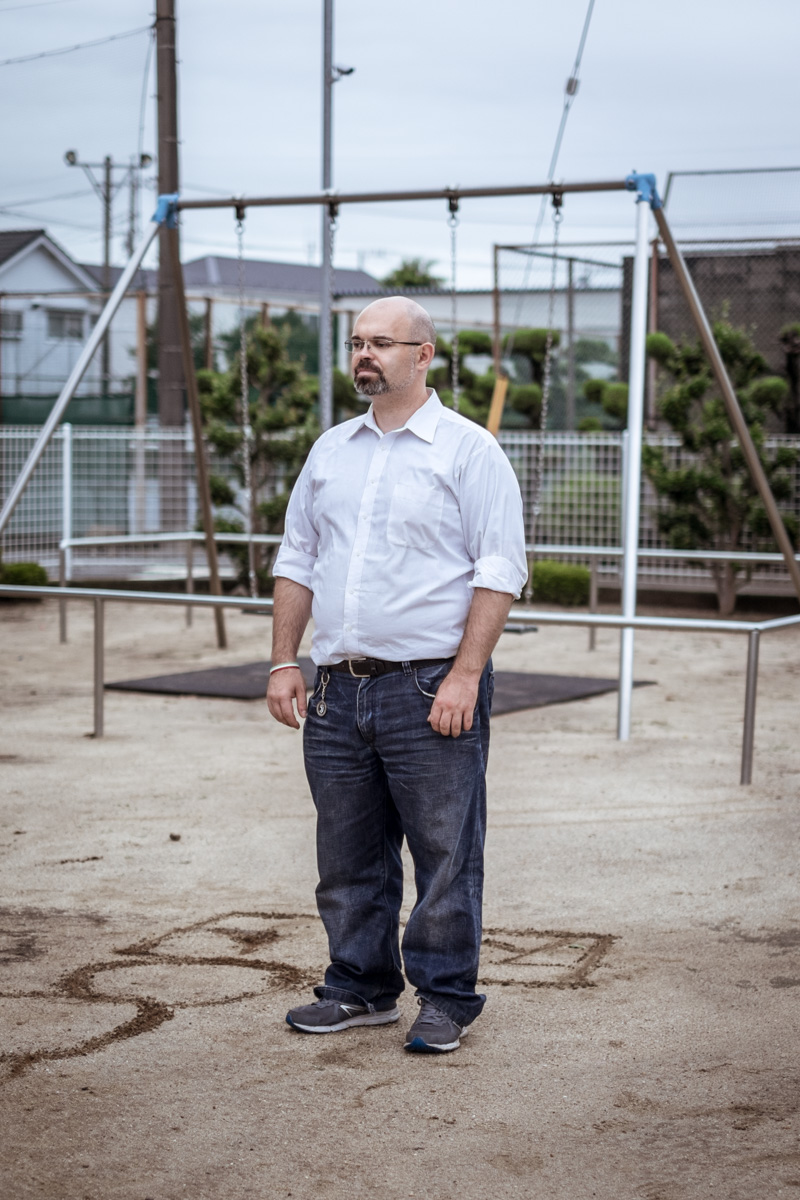
Gianluca (43, from Cagliari – Italy), poses for a portrait in a children's playground near his house in the outskirts of Tokyo. At the end of 2014, his Japanese wife left with their baby and never came back. He last saw his son in September 2015.
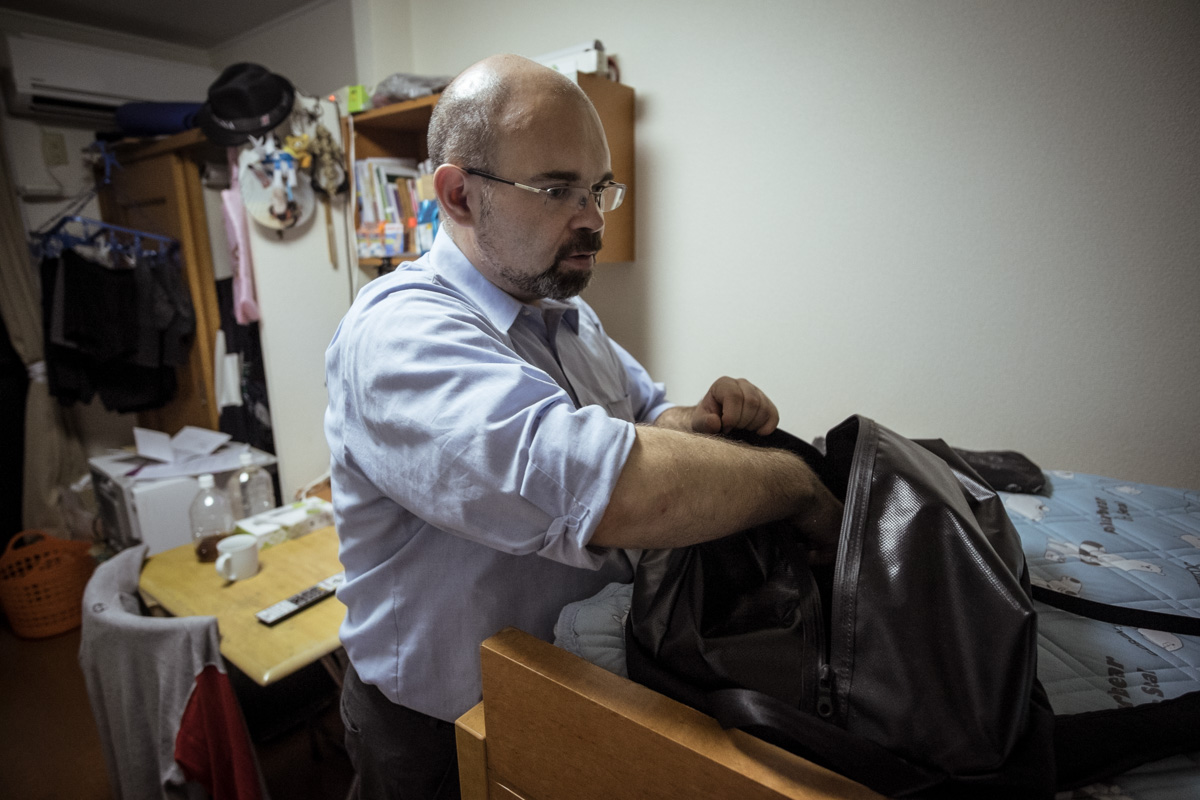
In his mini apartment in the outskirts of Tokyo, Gianluca (43, from Cagliari – Italy) packs his bag; the day after he will travel to Hokkaido (far North Japan) to attend a scheduled visit with his son. Nobody will show up, just as nobody did in the last 5 scheduled visits.
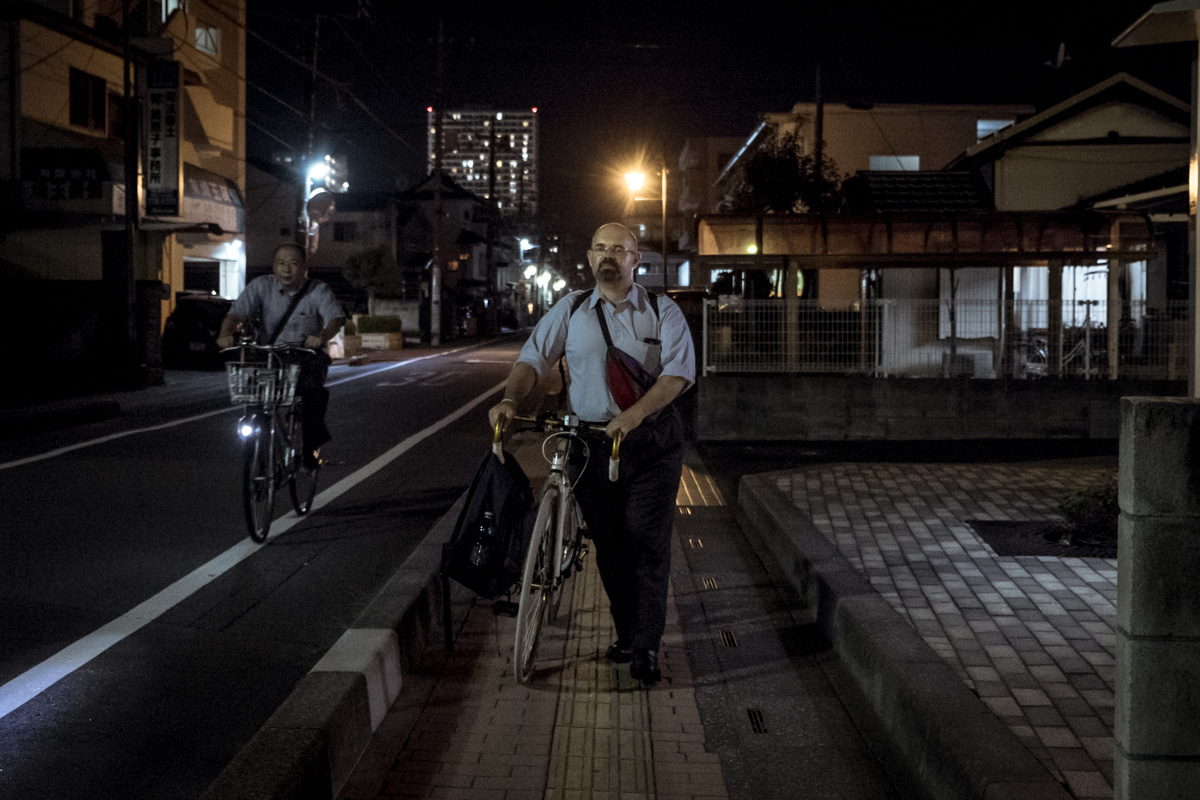
Gianluca (43, from Cagliari – Italy), walks home from work with his bike. At the end of 2014, his Japanese wife left with their baby and never came back. He last saw his son in September 2015.
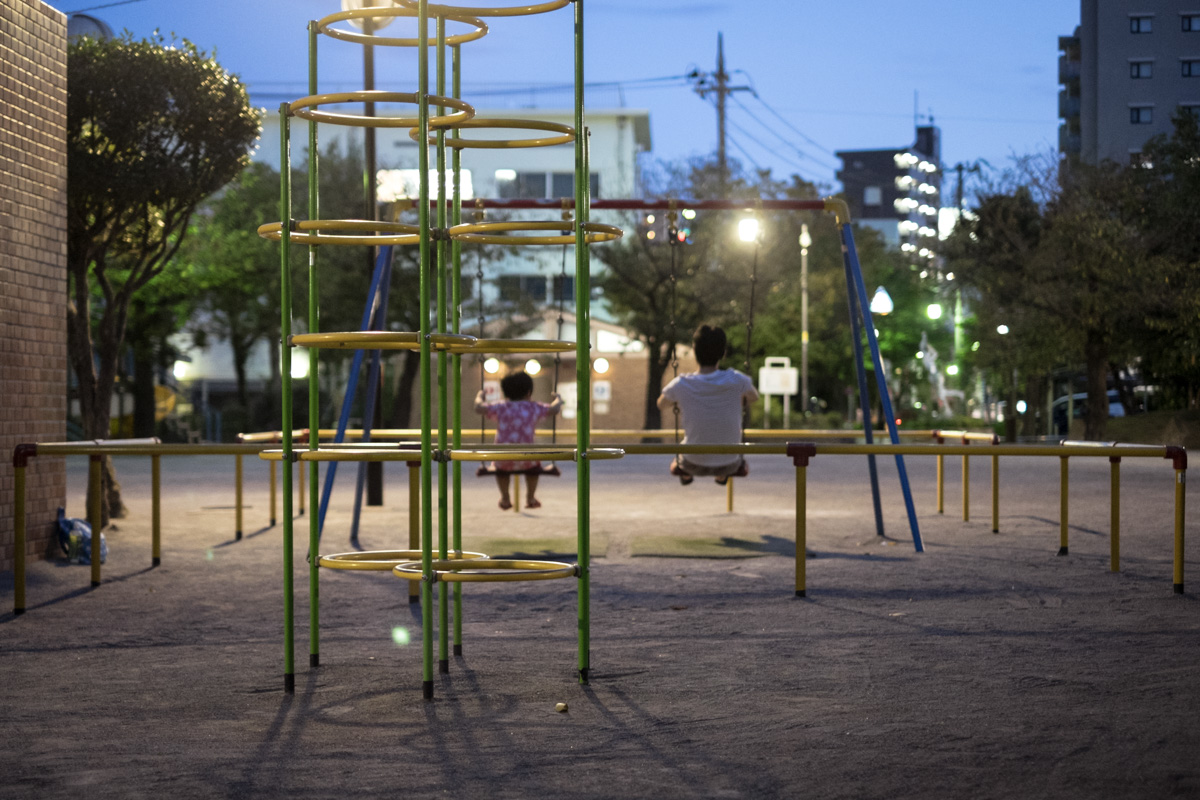
Tokyo (Japan), September 2018. At dusk, a father and his child play on a swing in a children’s playground in Tokyo. Japan is internationally considered the “black hole” of parental child abduction: in Japan, every year, an estimated 150,000* parents face the tragedy of having their children abducted by their partner. Currently, the Japanese judicial system does not contemplate the joint custody in case of separation, and most of the lawsuit eventually filed by the left-behind fathers do not lead to a result in their favour. *Data: Kizuna Child-Parent Reunion.
